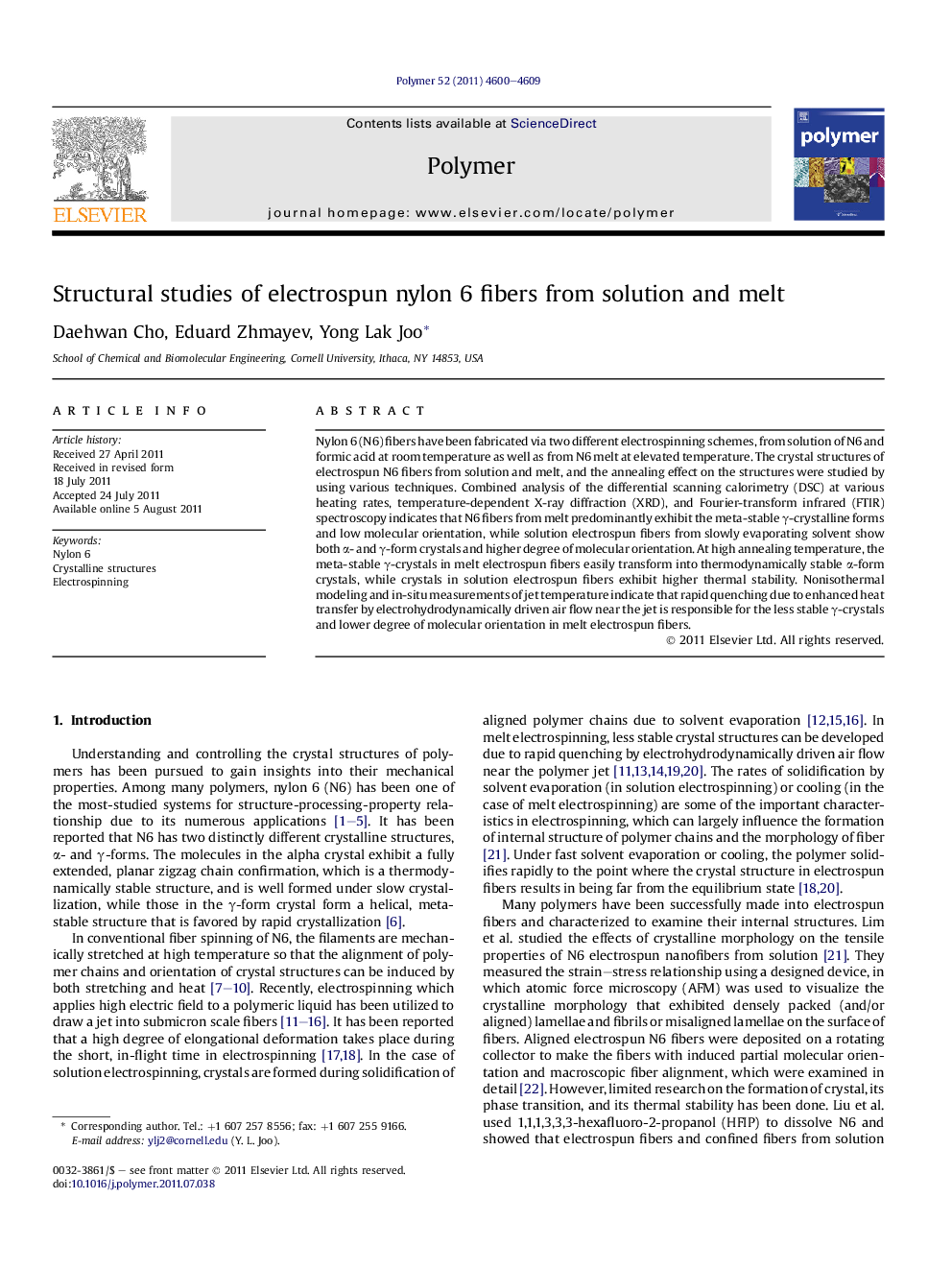| Article ID | Journal | Published Year | Pages | File Type |
|---|---|---|---|---|
| 5183811 | Polymer | 2011 | 10 Pages |
Nylon 6 (N6) fibers have been fabricated via two different electrospinning schemes, from solution of N6 and formic acid at room temperature as well as from N6 melt at elevated temperature. The crystal structures of electrospun N6 fibers from solution and melt, and the annealing effect on the structures were studied by using various techniques. Combined analysis of the differential scanning calorimetry (DSC) at various heating rates, temperature-dependent X-ray diffraction (XRD), and Fourier-transform infrared (FTIR) spectroscopy indicates that N6 fibers from melt predominantly exhibit the meta-stable γ-crystalline forms and low molecular orientation, while solution electrospun fibers from slowly evaporating solvent show both α- and γ-form crystals and higher degree of molecular orientation. At high annealing temperature, the meta-stable γ-crystals in melt electrospun fibers easily transform into thermodynamically stable α-form crystals, while crystals in solution electrospun fibers exhibit higher thermal stability. Nonisothermal modeling and in-situ measurements of jet temperature indicate that rapid quenching due to enhanced heat transfer by electrohydrodynamically driven air flow near the jet is responsible for the less stable γ-crystals and lower degree of molecular orientation in melt electrospun fibers.
Graphical abstractDownload full-size image
